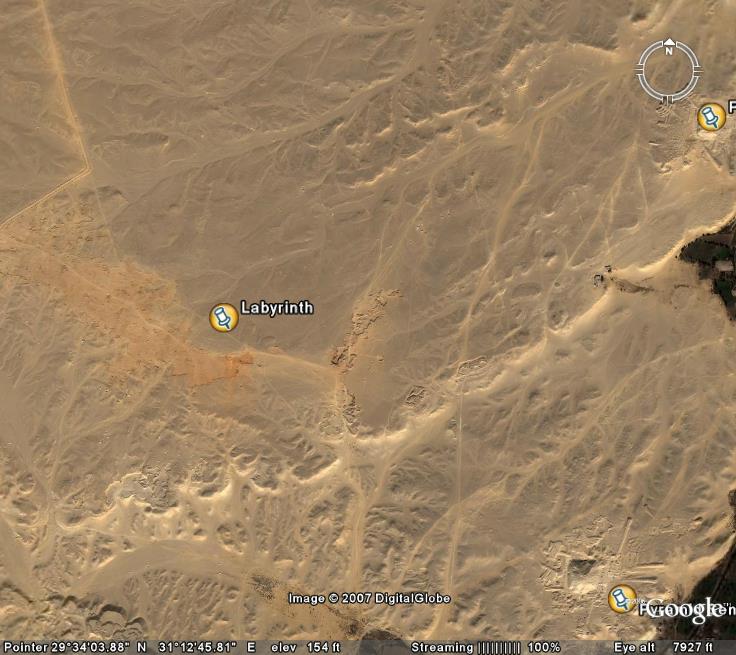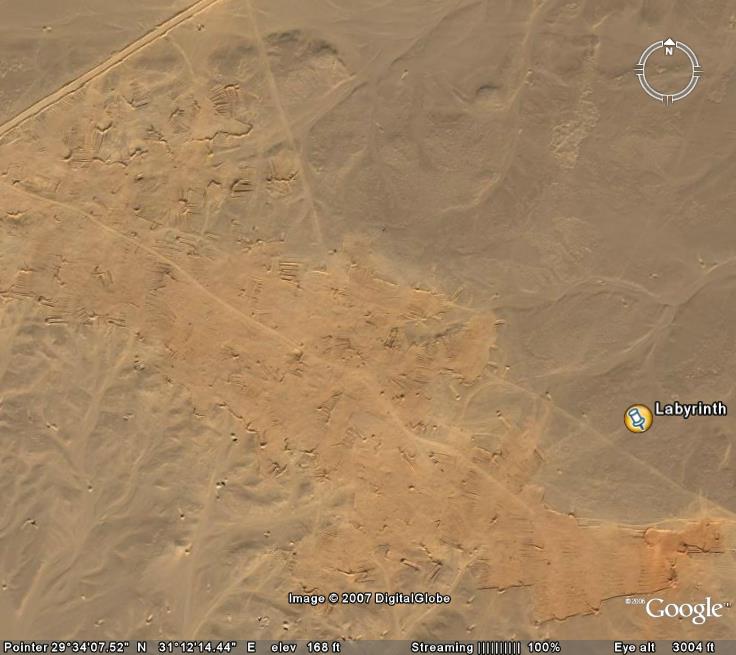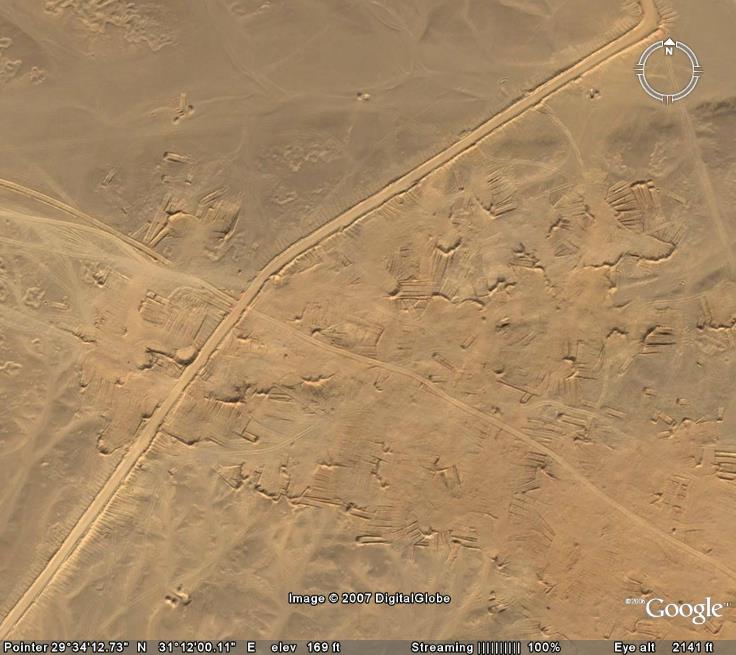The standard interpretation that the "Arsinoite Nome" is in the Fayum, and is Hawara. The "Nome of Heracleopolites" should be somewhere else.
Pliny has a list of 4 groups of 8 Big Pyramids here. 1,2,2,3. I determined that this list follows the order of pyramids
from South to North(Hawara to Giza). According to my re-interpretation, the Labyrinth is near a pair of pyramids to the North,
and not the lone one in Hawara.
Because the former capital of Egypt, Itjtawy, was around Lisht, I think that Lisht may be a reasonable place for a Labyrinth. I have
found something big that is a different color than the surrounding terrain, and has lots of parralel lines. It doesn't look natural to me.
Pliny book 36.16
"There is one to be seen in the Nome of Arsinoites [Hawara];2
two in that of Memphites[Lisht], not far from the Labyrinth
, of which we shall shortly have to speak;3 and two in the place where Lake Moeris4 was excavated[Dashur?],
an immense artificial piece of water, cited by the
Egyptians among their wondrous and memorable works: the summits of the
pyramids, it is said, are to be seen above the water.
The other three pyramids, the renown of which has filled the whole
earth[Giza]
, and which are conspicuous from every quarter to persons
navigating the river, are situate on the African5 side of it, upon a
rocky sterile elevation. They lie between the city of Memphis and what
we have mentioned6 as the Delta, within four miles of the river, and
seven miles and a-half from Memphis, near a village known as Busiris,
the people of which are in the habit of ascending them."
Pliny book 36.19
"There is still in Egypt, in the Nome of Heracleopolites,1 a labyrinth,2 which was the first constructed, three thousand six hundred years ago,
they say, by King Petesuchis or Tithoes: although, according to Herodotus, the entire work was the production of no less than twelve kings, the last
of [p. 6340] whom was Psammetichus. As to the purpose for which it was built, there are various opinions: Demoteles says that it was the palace of King Moteris,
and Lyceas that it was the tomb of Moeris, while many others assert that it was a building consecrated to the Sun, an opinion which mostly prevails.
...
They are all of them covered with arched roofs of polished stone; at the entrance, too, of the Egyptian Labyrinth, a thing that surprises me, the building
is constructed of Parian marble, while throughout the other parts of it the columns are of syenites.5 With such solidity is this huge mass constructed, that the
lapse of ages has been totally unable to destroy it, seconded as it has been by the people of Heracleopolites, who have marvellously ravaged a work which they have
always held in abhorrence. To detail the position of this work and the various portions of it is quite impossible, it being sub- [p. 6341] divided into regions and
praefectures, which are styled nomes,6 thirty in number, with a vast palace assigned to each. In addition to these, it should contain temples of all the gods of Egypt,
and forty statues of Nemesis7 in as many sacred shrines; besides numerous pyramids, forty ells8 in height, and covering six arurae9 at the base. Fatigued with wandering
to and fro, the visitor is sure to arrive at some inextricable crossing or other of the galleries. And then, too, there are banquetting rooms situate at the summit
of steep ascents; porticos from which we descend by flights of ninety steps; columns in the interior, made of porphyrites;10 figures of gods; statues of kings; and
effigies of hideous monsters. Some of the palaces are so peculiarly constructed, that the moment the doors are opened a dreadful sound like that of thunder reverberates
within: the greater part, too, of these edifices have to be traversed in total darkness. Then again, without the walls of the Labyrinth, there rises another mass of
buildings known as the "Pteron;"11 beneath which there are passages excavated leading to other subterranean palaces. One person, and only one, has made some slight
repairs to the Labyrinth; Chaeremon,12 an eunuch of King Necthebis, who lived five hundred years before the time of Alexander the Great. It is asserted, also, that
while the arched roofs of squared stone were being raised, he had them supported by beams of thorn13 boiled in oil.
|





